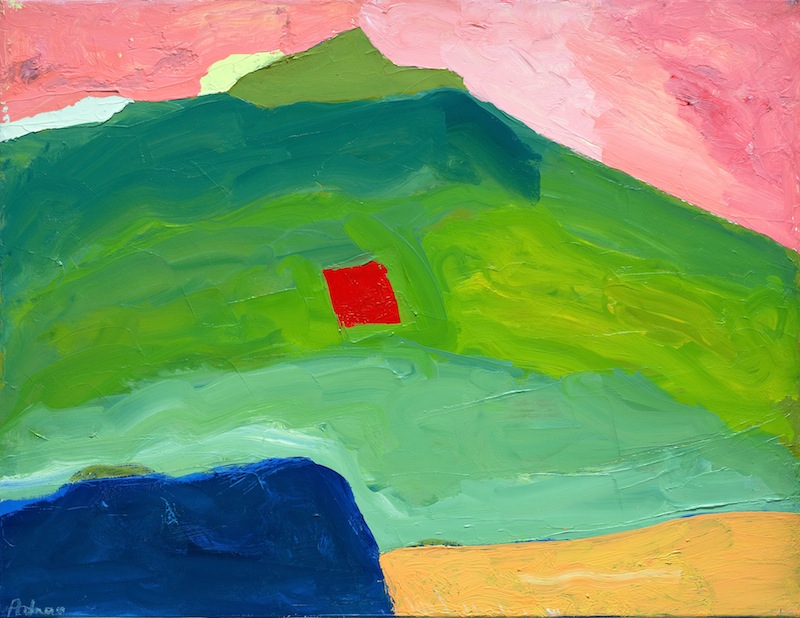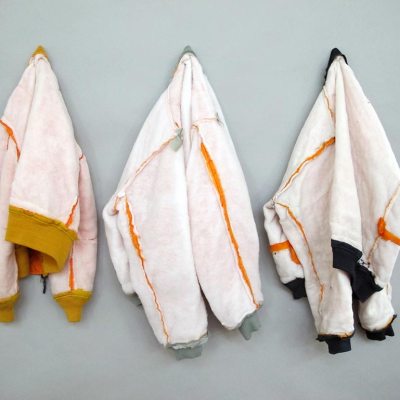Vroom. That, I guess is the operative word here. I’m staring at a photo taken by Jacques-Henri Lartigue from the stands at the 1929 Antibes Grand Prix, and I can’t think of another way to sum it up. A wide dirt track through a glade has erupted into a dust storm, clods of – I think – dry mud flying across Lartigue’s view at diagonals. You can just about make out the form of a racing car ploughing into the bottom of the frame, with two others screeching in close behind. You could gas yourself with the fumes if you looked close enough.
What’s odd, though, is that the three racing cars competing for our attention at the centre of the photograph aren’t nearly the most interesting things about it. For a start, Lartigue’s view is, I would guess, deliberately skewed. As if the excitement of the race isn’t enough for him, he’s tilted his camera ever so slightly to the right, heightening the drama to a degree that makes me gnaw my nails. Perhaps as an acknowledgement of this sleight of vision, he evens scrawls his unruly signature at a slant. A rope or cable of some sort drapes itself into a louche arc in the top left hand corner, dangling from nowhere. It’s as if the energy of this fraction of a moment has caused the pictorial universe to cave in on itself.
What I find fascinating, though, are the figures in the crowd in the foreground. A woman’s smart, round-topped hat resembles nothing so much as an army helmet; with the chaos enveloping the rest of the image, you could be forgiven for thinking it was a picture of soldiers preparing to go ‘over the top’ in the midst of an artillery barrage.
By turns pervy, gung-ho and downright surreal, Lartigue was a curious photographer. He may not have had Atget’s knack for capturing the ghostly solemnity of the city, nor Robert Capa’s sublime grit, but then again, you can’t honestly say you’d want to be there in the frame with their subjects. With Lartigue, it’s different. He brings a laconically flaneurial mood to nearly every composition, and damn does he make what he’s seeing look enticing.
Mary and Janine Dupuis under the soft top of Jacques Dupuis’s Pic-Pic, her father, La Baule (1915), J.H. Lartigue. © Ministère de la Culture – France / A.A.J.H.L.

This show at Chelsea’s Michael Hoppen Gallery (until 9 August), curated by the novelist and sometime art world prankster William Boyd, brings together a good 40 of his best images, all of which give the impression of having been taken accidentally. Of course, this isn’t the case – actually, one of the most interesting aspects of Lartigue’s work was the degree to which it was posed. Are these really the casual, haphazard snapshots they purport to be? Who cares. I have no interest in motor racing – but what I wouldn’t give to be in that crowd.
*
Back in the real world, talk in London is of nothing but ‘Brexit’. Me? I’m a staunch remainer, but still I’m a little sceptical about the pro-European posters created by the likes of Wolfgang Tillmans and Tracey Emin.
Aesthetically I have no issue, but I can’t help but feel that their approach smacks a little of the ‘elitism’ of which the remainers are so often accused. I have always run hot and cold about Tillmans: for every one of his successes, the more self-consciously hip aspects of his work can be off-putting. Were I undecided, I highly doubt he’d be the one to sway me.
As for Emin and the ‘Love In’ posters adorning the entrance to my local Tube station…well, where to start? I write this as a fan, but it’s hard to overlook her notoriety, not to mention her widely reported sentiments on taxation, as factors that will count against her in this debate.
https://twitter.com/BenQuinn75/status/742365128809697280
This is not to say that the art world shouldn’t take a stance on the referendum. My favourite effort so far comes from Glasgow-based artist Ewan Mitchell. Against an ambiguous abstract background, bold yellow letters offer the most sensible argument for staying in that I can think of: Be wary of easy answers to complex problems.
*
Still, the arts calendar grinds on – and, mercifully, there’s almost enough good stuff to distract from the voodoo politics of the referendum campaign. Alex Katz’s show at the Serpentine is as gorgeous as you’d hope, but the real star at the galleries this summer is Etel Adnan, whose bright but somehow stark paintings truly floored me (both shows run until 11 September). There are many things I dislike about the Serpentine galleries, but their exhibition programme – surely the most important thing? – has been consistently superlative for some time now. Long may it continue.
Untitled (c. 1995–2000), Etel Adnan. Courtesy the artist and Sfeif-Semler Gallery Hamburg/Beirut




